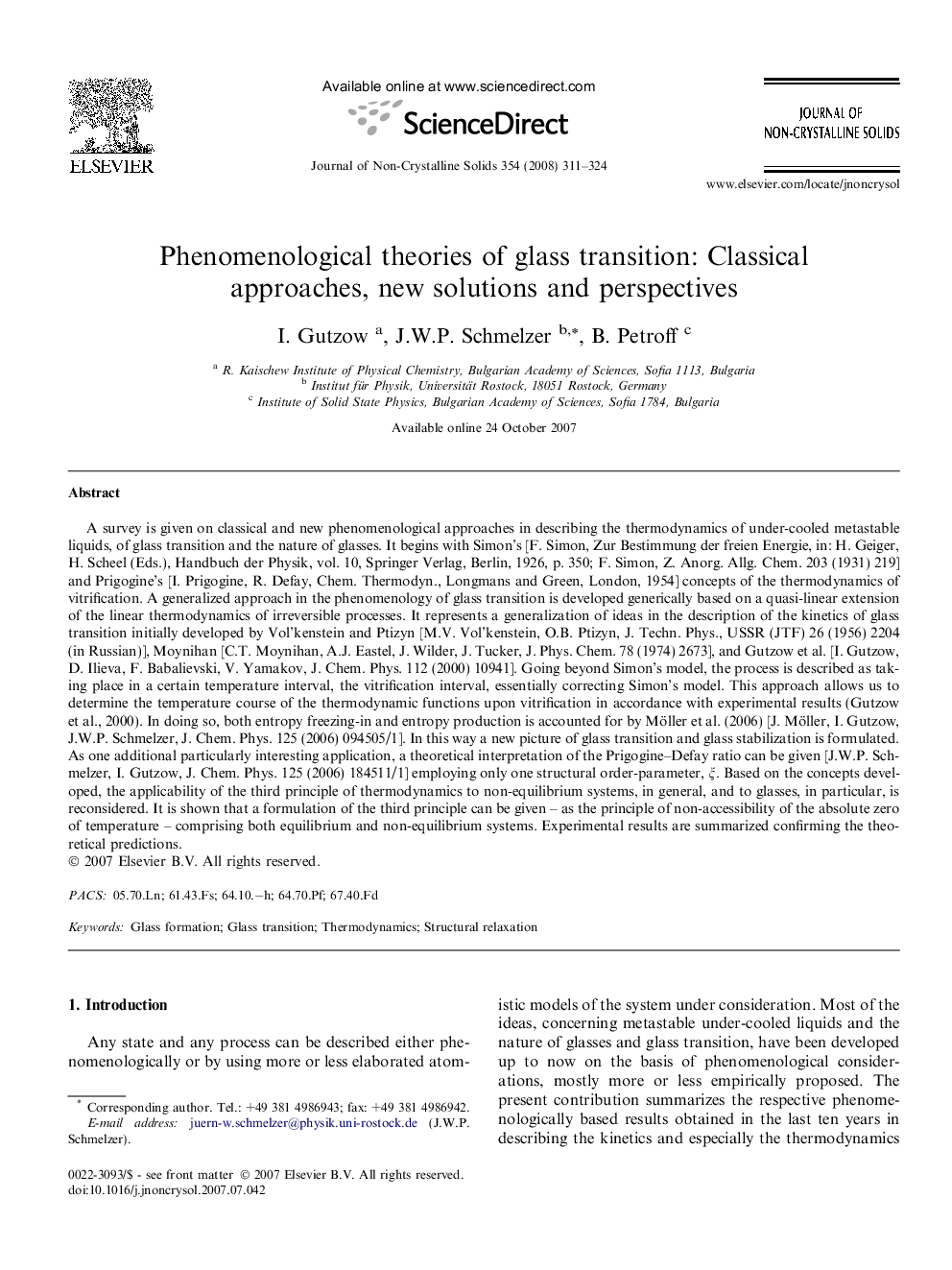| Article ID | Journal | Published Year | Pages | File Type |
|---|---|---|---|---|
| 1485060 | Journal of Non-Crystalline Solids | 2008 | 14 Pages |
A survey is given on classical and new phenomenological approaches in describing the thermodynamics of under-cooled metastable liquids, of glass transition and the nature of glasses. It begins with Simon’s [F. Simon, Zur Bestimmung der freien Energie, in: H. Geiger, H. Scheel (Eds.), Handbuch der Physik, vol. 10, Springer Verlag, Berlin, 1926, p. 350; F. Simon, Z. Anorg. Allg. Chem. 203 (1931) 219] and Prigogine’s [I. Prigogine, R. Defay, Chem. Thermodyn., Longmans and Green, London, 1954] concepts of the thermodynamics of vitrification. A generalized approach in the phenomenology of glass transition is developed generically based on a quasi-linear extension of the linear thermodynamics of irreversible processes. It represents a generalization of ideas in the description of the kinetics of glass transition initially developed by Vol’kenstein and Ptizyn [M.V. Vol’kenstein, O.B. Ptizyn, J. Techn. Phys., USSR (JTF) 26 (1956) 2204 (in Russian)], Moynihan [C.T. Moynihan, A.J. Eastel, J. Wilder, J. Tucker, J. Phys. Chem. 78 (1974) 2673], and Gutzow et al. [I. Gutzow, D. Ilieva, F. Babalievski, V. Yamakov, J. Chem. Phys. 112 (2000) 10941]. Going beyond Simon’s model, the process is described as taking place in a certain temperature interval, the vitrification interval, essentially correcting Simon’s model. This approach allows us to determine the temperature course of the thermodynamic functions upon vitrification in accordance with experimental results (Gutzow et al., 2000). In doing so, both entropy freezing-in and entropy production is accounted for by Möller et al. (2006) [J. Möller, I. Gutzow, J.W.P. Schmelzer, J. Chem. Phys. 125 (2006) 094505/1]. In this way a new picture of glass transition and glass stabilization is formulated. As one additional particularly interesting application, a theoretical interpretation of the Prigogine–Defay ratio can be given [J.W.P. Schmelzer, I. Gutzow, J. Chem. Phys. 125 (2006) 184511/1] employing only one structural order-parameter, ξ. Based on the concepts developed, the applicability of the third principle of thermodynamics to non-equilibrium systems, in general, and to glasses, in particular, is reconsidered. It is shown that a formulation of the third principle can be given – as the principle of non-accessibility of the absolute zero of temperature – comprising both equilibrium and non-equilibrium systems. Experimental results are summarized confirming the theoretical predictions.
